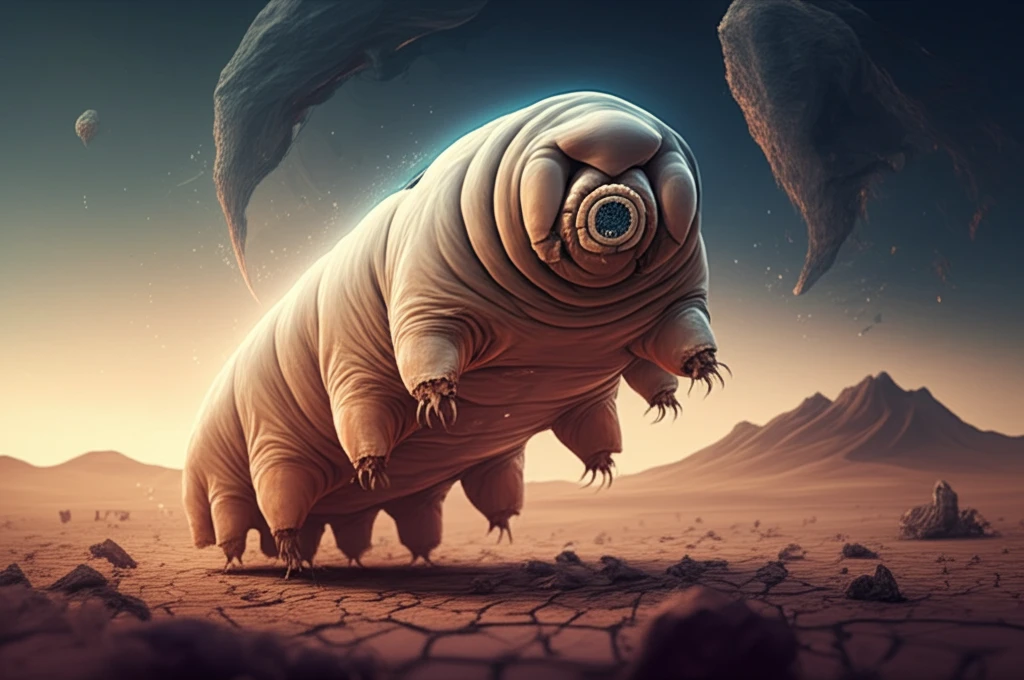
Unlocking Nature's Secrets: How Tiny Creatures Survive the Impossible and What We Can Learn
"Delving into the extreme survival strategies of microscopic organisms for breakthroughs in biomedicine and sustainable technologies."
Life finds a way, even in the most inhospitable conditions. From the vast vacuum of space to the arid landscapes of Africa, nature is full of organisms that have evolved extraordinary survival mechanisms. Among these resilient creatures are tardigrades, also known as water bears, and the larvae of the African midge, Polypedilum vanderplanki. These tiny organisms possess remarkable abilities to withstand complete desiccation, a state known as anhydrobiosis, offering invaluable insights for various applications.
Imagine an animal that can lose almost all of its body water, withstand extreme temperatures, and even survive radiation exposure. That's the reality for tardigrades, microscopic invertebrates found in diverse environments worldwide. Similarly, the larvae of Polypedilum vanderplanki can endure complete drying out, entering a dormant state until water returns. Understanding how these organisms achieve such feats could revolutionize how we preserve biological materials and engineer resilient technologies.
This article explores the fascinating world of anhydrobiosis, focusing on the survival strategies of tardigrades and Polypedilum vanderplanki larvae. By examining the molecular mechanisms that underpin their resilience, we can unlock nature's secrets and pave the way for innovations in biomedicine, materials science, and beyond. Join us as we delve into the science behind extreme survival and discover the potential of these remarkable organisms.
How Tardigrades and Midge Larvae Defy Desiccation: The Science of Anhydrobiosis

Anhydrobiosis, meaning 'life without water,' is a survival strategy employed by various organisms to withstand prolonged periods of drought. During anhydrobiosis, organisms enter a dormant state characterized by a drastic reduction in metabolic activity. This allows them to survive until water becomes available again. Tardigrades and Polypedilum vanderplanki larvae are prime examples of creatures that have mastered this art.
- Trehalose Production: Tardigrades accumulate high concentrations of trehalose, a sugar that helps stabilize cell membranes and proteins during dehydration.
- Intrinsically Disordered Proteins (IDPs): Tardigrades possess unique IDPs that protect cellular structures and maintain enzyme function during desiccation. These proteins form gels that vitrify into a glass-like solid, providing mechanical support and preventing damage.
- Reduced Metabolism: During anhydrobiosis, tardigrades drastically reduce their metabolic rate, minimizing energy expenditure and cellular damage.
The Future of Anhydrobiosis Research: Applications and Implications
Understanding the mechanisms that underpin anhydrobiosis in tardigrades and Polypedilum vanderplanki larvae holds immense potential for various applications. By harnessing the protective properties of trehalose, IDPs, and LEA proteins, we can develop novel strategies for preserving biological materials, engineering stress-tolerant crops, and creating innovative biomedical technologies. Imagine preserving organs for transplantation without the need for cryopreservation or developing crops that can withstand extreme drought conditions. The possibilities are vast and exciting.
